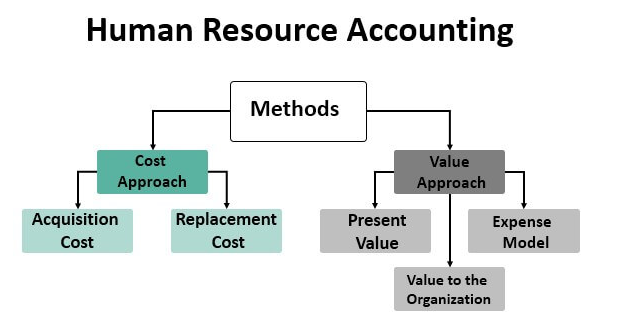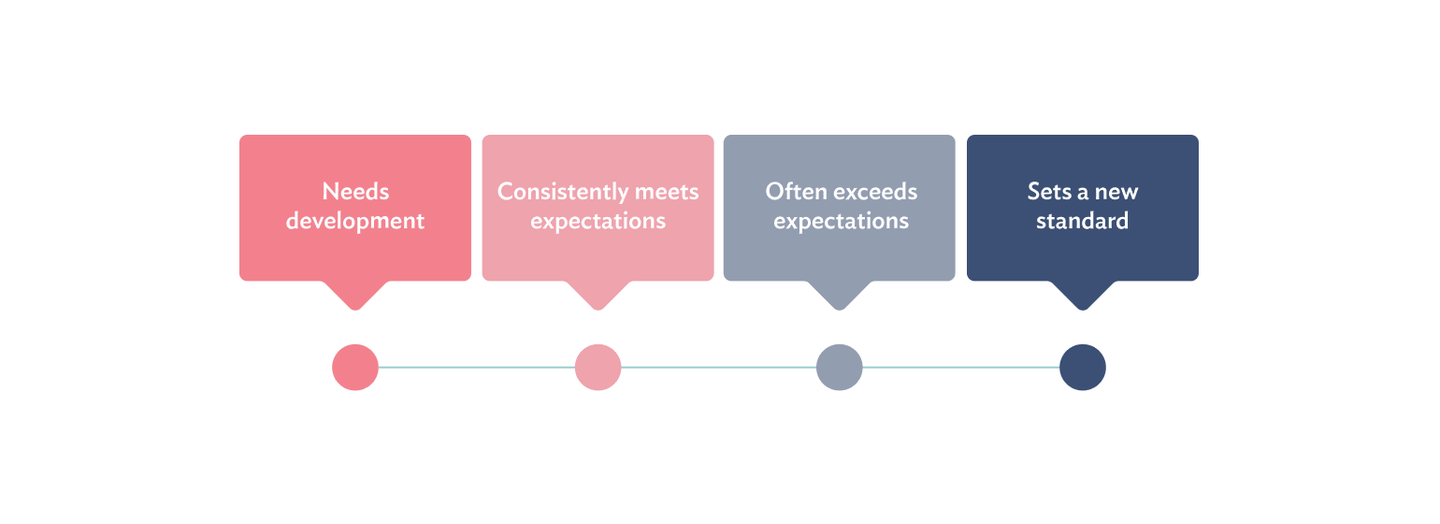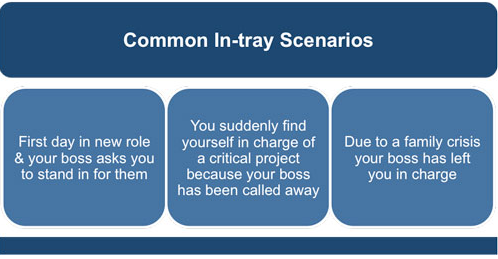7 Métodos prácticos de evaluación del rendimiento para los trabajadores modernos
Descubra métodos prácticos y eficaces de evaluación del rendimiento para los trabajadores modernos. Aprenda a evaluar el rendimiento de los empleados, a proporcionar comentarios significativos y a mejorar la productividad.
En esta página
Los métodos de evaluación del rendimiento son la forma de determinar las aptitudes, el crecimiento y el progreso de los empleados en su empresa. También se conocen comúnmente como métodos de evaluación del rendimiento.
Es importante evaluar periódicamente el rendimiento de los empleados para estar al día de sus contribuciones a la empresa.
Tanto su empresa como sus empleados necesitan un proceso de evaluación. Esto se debe a que el proceso ayuda a ambos a comprender los puntos fuertes de los empleados. Sabrás en quién delegar, a quién ascender, a quién formar, despedir, etc.
Este post trata sobre el propósito de una evaluación del rendimiento, sus beneficios, algunos métodos y ejemplos de cómo aplicarlos. Prepárate para descubrir el poder de los métodos de evaluación del desempeño para optimizar el rendimiento de tu organización y maximizar el potencial de los empleados.
Empecemos.
¿Qué son los métodos de evaluación del rendimiento?
Los métodos de evaluación del rendimiento se refieren a los enfoques sistemáticos que utilizan las organizaciones para evaluar y valorar el rendimiento de sus empleados.
Estos métodos proporcionan un marco estructurado para medir y analizar diversos aspectos del rendimiento de los empleados, como los conocimientos del puesto, las competencias, la productividad y las contribuciones generales a la organización.
Los métodos de evaluación del rendimiento sirven para recabar información objetiva y subjetiva, establecer expectativas de rendimiento, reconocer y recompensar los logros, identificar áreas de mejora y tomar decisiones informadas sobre ascensos, recompensas y oportunidades de formación.
El objetivo de la evaluación del rendimiento
Las evaluaciones del rendimiento tienen por objeto ayudar a las organizaciones a calibrar la productividad de los empleados y determinar su valor. También ayudan a los empleados a evaluar su rendimiento e identificar las áreas en las que necesitan trabajar.
Ventajas para la empresa
Estas son algunas de las ventajas que puede obtener su empresa de una evaluación del rendimiento.
- En ocasiones, las empresas realizan evaluaciones para determinar qué empleado del equipo opta a un ascenso en función de su rendimiento general.
- La evaluación ayuda a las organizaciones a revelar qué empleado merece una mejor retribución, por ejemplo, un aumento de sueldo o una prima, etc.
- Las empresas pueden identificar los puntos débiles de sus empleados y averiguar cómo ayudarles. Por ejemplo, estableciendo programas de formación.
- A partir de una evaluación del rendimiento, una empresa puede descubrir que necesita cambiar ciertos aspectos de sus procesos de selección para contar con mejores empleados.
- Las evaluaciones del rendimiento también ayudan a los empresarios a informar a sus empleados sobre su rendimiento, sus puntos fuertes y sus puntos débiles.
Ventajas para los trabajadores
Los empleados también se benefician de las evaluaciones del rendimiento. A continuación te explicamos por qué valoran las evaluaciones y por qué deberías hacerlas.
- Les hace sentirse reconocidos por la organización. Sobre todo cuando son recompensados o elogiados por sus logros. De hecho, si tienes plataformas para la promoción de los empleados, puedes hacer que escriban sobre sus ascensos también en las redes sociales.
- Al identificar sus puntos débiles, pueden identificar áreas de sus funciones en las que necesitan formación. Esto favorece la promoción profesional.
- Las evaluaciones del rendimiento permiten a los empresarios discutir con sus empleados posibles objetivos a largo plazo.
- Los empleados están más motivados cuando saben cuáles son sus objetivos. Éstos se revelan más claramente durante las evaluaciones del rendimiento.
- Los empleados esperan con impaciencia las evaluaciones, ya que pueden optar a ascensos o bonificaciones. Los empleados satisfechos pueden convertirse en embajadores de la marca y ayudar con el marketing de embajadores a hacer crecer su marca.
7 métodos de evaluación del rendimiento a seguir en 2023
Ahora que ya sabe por qué su empresa necesita evaluaciones del rendimiento con regularidad, aquí tiene algunos métodos modernos de evaluación del rendimiento que debería probar en 2023.
1. Método de feedback de 360 grados
También se conoce como método de feedback multievaluador y es un método objetivo de evaluación del rendimiento. En él, un administrador de recursos humanos recoge opiniones sobre un empleado de su círculo laboral.
Esto incluye a su jefe, supervisor, miembros del equipo, clientes y otras partes externas con las que interactúan habitualmente.
¿Y por qué es eficaz este método?
Este método proporciona una visión holística del rendimiento del empleado, lo que ayuda en el proceso de evaluación.
También es menos sesgada, ya que no depende de la información de una sola fuente. Si la información proporcionada por la mayoría de las personas coincide, resulta más fiable para el administrador de recursos humanos.
Algunos componentes de una evaluación del rendimiento de 360 grados son:
- Autoevaluación: Aquí, el empleado tiene la oportunidad de recordar sus procesos y comprender sus capacidades. Se le plantean determinadas preguntas y puede responder a ellas basándose en lo que recuerda de sus procesos.
- Evaluación del superior jerárquico: El supervisor inmediato del empleado evalúa su rendimiento y presenta su evaluación. También se tienen en cuenta las valoraciones de otros directivos con los que haya trabajado el empleado.
- Evaluaciones entre compañeros: Se trata de evaluaciones realizadas por miembros del equipo y colegas cercanos. Esta parte de la evaluación ayuda a valorar la capacidad de los empleados para trabajar en equipo, su motivación a la hora de realizar las tareas, su fiabilidad y puntualidad, etc.
- Evaluación de los subordinados: Los subordinados deben poder dar su opinión sobre sus superiores. Esto puede ser delicado, ya que puede haber miedo de por medio.
- Opiniones de clientes: Se trata de reseñas de clientes internos que se relacionan directamente con la empresa o de cualquier cliente externo que interactúe con el empleado de forma habitual.
A continuación se ofrecen ejemplos de preguntas que puede formular a los participantes seleccionados para que el resultado de la evaluación sea más eficaz:
1. ¿Qué tres palabras utilizaría para elogiar a [nombre del empleado]?
2. ¿Cuál diría que es el mayor punto débil de [nombre del empleado]? Recuerde que sus críticas deben ser constructivas.
3. ¿Qué valores fundamentales ve que [nombre del empleado] demuestra regularmente?
4. ¿Cree que [nombre del empleado] está motivado en la forma en que realiza sus tareas?
5. ¿Cómo demuestra [nombre del empleado] [valor de la empresa] en el lugar de trabajo?
2. Método contable HR
Este método de evaluación del rendimiento puede basarse en los costes o en el valor.

El enfoque basado en los costes evalúa las contribuciones monetarias de un empleado a la empresa frente a los costes de retención de la empresa. Los costes de retención incluyen salarios, gastos generales, sustitución y jubilación.
El modelo basado en el valor sopesa la contribución monetaria y no monetaria de un empleado a la empresa frente a sus costes.
A continuación, ambos evalúan su rendimiento basándose en esta comparación. Este método de evaluación del rendimiento es especialmente idóneo para pequeñas empresas en las que la continuidad del negocio depende del rendimiento de un empleado.
En las grandes empresas, este modelo pretende ayudar a los responsables de recursos humanos a planificar con mayor eficacia. También puede utilizar este método de valoración para determinar cuánto más pagar a un empleado.
3. Método de autoevaluación
Este método hace recaer la responsabilidad de la evaluación en el empleado y le implica en el proceso. Los empleados evalúan su contribución a la empresa en función de parámetros establecidos.
Aquí, el empleado está a cargo de su desarrollo. Puede plantear preguntas de evaluación sobre sus funciones y tomar conciencia de sus procesos.
Este método tiene algunas ventajas para el empleado. Mientras se evalúa a sí mismo, puede identificar algunos de sus puntos fuertes y débiles y saber en qué tiene que trabajar más.
Otras ventajas son:
- Menos discrepancias: Si tu autoevaluación difiere de la de tu supervisor, puedes discutir e identificar las discrepancias en el proceso.
- Mayor compromiso: Los empleados participan más en este proceso, que fomenta la colaboración entre directivos y subordinados. También hace que los empleados se sientan valorados.
- Motivación: La autoevaluación ayuda a la motivación de los empleados, ya que controlan mejor sus fracasos y sus éxitos.
- Crecimiento personal y profesional: Los empleados tienen tiempo para reflexionar sobre sí mismos y criticar sus propios métodos y comportamientos.
Aunque la autoevaluación deja a los empleados la tarea de valoración más importante, los directivos también forman parte del proceso. Después de redactar sus informes de autoevaluación, los empleados se sientan con sus jefes para discutirlos.
Algunas de las ventajas de este método de evaluación para los directivos son:
- Los directivos pueden evaluar el rendimiento desde la perspectiva del empleado.
- Las autoevaluaciones ponen de manifiesto cualquier malentendido entre los directivos y sus subordinados.
- Los directivos también pueden recabar información sobre cómo mejorar el rendimiento y la motivación de los empleados más allá de la remuneración.
He aquí algunos ejemplos de preguntas de autoevaluación de empleados que puede compartir con sus equipos.
- ¿Cuáles son sus responsabilidades laborales?
- ¿Hay alguna tarea en la descripción de su puesto que ya no realice?
- ¿Qué es lo más fácil/más difícil de su trabajo?
- ¿De qué logros se siente más orgulloso?
- ¿Qué le hace bueno en su trabajo?
4. Método de gestión por objetivos (DPO)
En este método, directivos y empleados fijan un periodo específico de evaluación. A continuación, identifican los objetivos de rendimiento del empleado en los que centrarse durante este periodo y se los comunican mutuamente. A continuación, todos trabajan en pos de esos objetivos y fijan reuniones periódicas para hablar de los progresos.
Este método de evaluación del rendimiento valora si los objetivos de los empleados son SMART (específicos, mensurables, alcanzables, realistas y sensibles al tiempo). Los objetivos de los empleados deben alinearse con los objetivos generales a largo plazo de la empresa.
Al final del periodo establecido, se evalúa a los empleados y el éxito se recompensa con primas, ascensos, incrementos salariales, etc. Los fracasos se recompensan con más formación, traslados, etc.
Este método de evaluación del rendimiento mantiene el compromiso de los empleados, ya que tienen claro para qué están trabajando. Funciona mejor para evaluar a empleados en puestos de alta dirección.
Si se pregunta cómo empezar con la evaluación MBO, sepa que no tiene por qué ser específica al principio. Puedes empezar con objetivos generales a medida que tengas más claras las metas de tu empresa.
Algunos ejemplos de gestión del marketing digital por objetivos
- Aumente la generación de prospectos en un 25% cada mes
- Aumento de la tasa de participación en las redes sociales en un 5%.
- Consiga que los visitantes de su sitio web pasen más tiempo en él: cinco minutos más, etc.
- Mejorar en un 30% los índices de prospección de LinkedIn
Otros ejemplos de objetivos de recursos humanos son
- Mejorar la tasa de retención de empleados en un 25%.
- Mejorar la satisfacción de los empleados en un 10%.
- Establecer programas de formación para los empleados
5. Método BARS (Behaviorally Anchored Rating Scale)
Este método toma el rendimiento del empleado y lo compara con patrones de comportamiento que se basan en calificaciones numéricas. De este modo, obtendrá resultados tanto cuantitativos como cualitativos de su evaluación.
El primer paso para crear un BARS es recopilar incidentes críticos de comportamientos típicos en el lugar de trabajo. A continuación, edítelos y elimine los comportamientos repetitivos.
Reclasifique los incidentes restantes y asígneles escalas. Por ejemplo, en una escala de 1 a 5, 1 podría representar que no se cumplen las normas establecidas y cinco podría representar que se superan las normas.
A continuación, desarrolle un conjunto de incidentes para la evaluación del comportamiento en el lugar de trabajo.
Un ejemplo práctico de evaluación del rendimiento de un jefe de equipo podría ser:
- Escala 1: Hace comentarios inapropiados
- Escala 3. Permanece en silencio durante un altercado de equipo
- Escala 5: Modera a los miembros del equipo durante el desacuerdo
6. Método de la escala de valoración
Este método utiliza puntuaciones numéricas de elementos como la capacidad de liderazgo, la fiabilidad, la puntualidad, la capacidad de organización, etc. para medir el rendimiento de los empleados. Algunos ejemplos de escalas de valoración son las escalas Likert y las valoraciones por estrellas.
Se trata de un método simplificado de evaluación del rendimiento que los evaluadores utilizan para calificar a los empleados en una escala de deficiente a excelente.
No es tan eficaz como las escalas basadas en el comportamiento, que son más profundas y específicas. Sin embargo, puedes utilizarla para realizar una evaluación rápida.
Uno de los inconvenientes de este método es que no tiene en cuenta el rendimiento del empleado a lo largo del tiempo. Sólo recoge su rendimiento en el momento de la evaluación, lo que puede no ser un reflejo exacto del crecimiento del empleado.
He aquí un ejemplo de evaluación del rendimiento con una escala de puntuación.

Con este método de calificación, los empleados pueden ser evaluados por sus supervisores, gerentes, subordinados y, a veces, incluso por sus clientes, al igual que con el método de feedback de 360 grados.
Todo depende de la empresa o del papel que desempeñes. A continuación, el evaluador dará su valoración eligiendo un número o punto de la escala en función de su observación de tu trabajo y de su satisfacción.
Por ejemplo, el ítem en cuestión podría ser "la actitud de un empleado hacia sus clientes". Un evaluador puede elegir cualquier número en una escala del 1 al 10, siendo 1 deficiente y 10 excelente.
7. Método del centro de evaluación
Este método utiliza ejercicios estimulantes, como simulaciones de empresa, pruebas psicológicas, juegos de rol y entrevistas, para evaluar el comportamiento de los empleados.
A través de estos ejercicios, los empresarios llegan a conocer la personalidad de cada empleado en función de aspectos como la adaptabilidad, la puntualidad y la tolerancia.
Así podrá identificar cuáles son los puntos fuertes de sus empleados, si tienen grandes dotes de liderazgo, capacidad de organización, etc.
Este método también se utiliza en la mayoría de los procesos de contratación.
Este es el proceso que hay que seguir para idear un centro de evaluación.
- Evaluación previa: Aquí se deciden los objetivos de la evaluación del rendimiento, se buscan los revisores, se diseñan los ejercicios y se establece el método de calificación.
- Durante la evaluación: Explique el objetivo de cada ejercicio antes de realizarlo. A continuación, realice los ejercicios y anote los puntos fuertes de cada empleado.
- Evaluación posterior: Recoja los comentarios de sus revisores, evalúelos y compártalos con sus empleados. Si es necesario, imparta más formación a los empleados que la necesiten. Puedes utilizar los mejores editores de vídeo online para crear vídeos de formación para tus empleados y compartirlos con ellos para ayudarles a mejorar sus competencias.
Este método es ideal para organizaciones de los sectores de servicios, fabricación y educación.
He aquí un ejemplo de situación de evaluación para los empleados:

Métodos de evaluación del rendimiento: ¿cuál es el mejor para usted?
Todas las empresas evalúan periódicamente el rendimiento de sus empleados por diversos motivos. La lucha puede consistir en identificar qué método obtiene los mejores resultados.
Como ya se ha dicho, cada método de evaluación del rendimiento tiene sus ventajas e inconvenientes. La elección del método de evaluación ideal dependerá de su empresa y de lo que quiera obtener de la evaluación.
Tanto si busca mejorar la retención de empleados, cubrir un puesto o aumentar la productividad de los empleados, hay un método para usted. Así que considere cuidadosamente sus opciones y elija la correcta.
Preguntas frecuentes
He aquí algunas preguntas frecuentes sobre los métodos de evaluación del rendimiento.
¿Qué son los métodos de evaluación del rendimiento?
Los métodos de evaluación del rendimiento son enfoques sistemáticos que las organizaciones utilizan para evaluar y valorar el rendimiento de sus empleados. Estos métodos proporcionan un marco estructurado para medir la productividad, las competencias y los logros de los empleados.
¿Cómo deben elegir las organizaciones el método adecuado de evaluación del rendimiento?
La selección del método de evaluación del rendimiento adecuado depende de varios factores, como la cultura de la organización, las funciones del puesto y los resultados deseados. Es fundamental tener en cuenta las necesidades específicas de la organización y la naturaleza del trabajo que se realiza a la hora de elegir un método de evaluación.
¿Con qué frecuencia debe realizarse la evaluación del rendimiento?
La frecuencia de las evaluaciones del rendimiento varía según las organizaciones. Algunas realizan evaluaciones anuales, mientras que otras prefieren evaluaciones más frecuentes, como revisiones trimestrales o semestrales. La frecuencia debe permitir una retroalimentación significativa y la alineación con los objetivos de la organización.
¿Cómo pueden contribuir los métodos de evaluación del rendimiento al desarrollo de los empleados?
Los métodos de evaluación del rendimiento permiten a los directivos identificar los puntos fuertes y las áreas de mejora de los empleados. Las organizaciones pueden apoyar el crecimiento de los empleados, mejorar sus competencias y fomentar el aprendizaje continuo proporcionándoles comentarios constructivos y estableciendo objetivos de desarrollo.
¿Cómo pueden las organizaciones garantizar la imparcialidad y la objetividad en las evaluaciones del rendimiento?
Para garantizar la imparcialidad y la objetividad, las organizaciones deben establecer criterios de evaluación claros, ofrecer formación a los directivos sobre el proceso de evaluación, fomentar la comunicación bidireccional y mantener la documentación de los debates relacionados con el rendimiento. Las reuniones periódicas de calibración también pueden ayudar a alinear las evaluaciones entre los distintos gestores y departamentos.
¿Pueden adaptarse los métodos de evaluación del rendimiento a las necesidades específicas de la organización?
Sí, los métodos de evaluación del rendimiento pueden adaptarse a las necesidades y la cultura propias de una organización. La personalización puede implicar la modificación de métodos existentes, la combinación de distintos enfoques o la creación de nuevos métodos de evaluación que reflejen los valores y objetivos de la organización.
¿Cómo pueden prepararse los empleados para una evaluación del rendimiento?
Los empleados pueden prepararse para las evaluaciones del rendimiento revisando sus responsabilidades laborales, reflexionando sobre sus logros y retos, recopilando datos o ejemplos relevantes que demuestren su rendimiento y estableciendo objetivos personales para su desarrollo futuro.
¿Cómo pueden las organizaciones utilizar eficazmente los datos de la evaluación del rendimiento?
Los datos de la evaluación del rendimiento permiten identificar tendencias, realizar un seguimiento de los progresos, detectar necesidades de formación y tomar decisiones fundamentadas sobre ascensos, recompensas y planes de mejora del rendimiento. Es importante analizar e interpretar los datos para obtener información significativa y tomar las medidas adecuadas.













